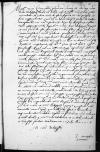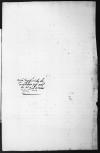Litteras Magnificentiae Vestrae ego una cum domino ⌊Nibschicz⌋ dudum non vidimus, nisi quasdam ⌊Viennae⌋ datas[2], satis minutas et rebus nostris, de quibus saepius Magnificentiae Vestrae scripsimus, nihil fere respondentes. Quod tamen
cf. Cic. S. Rosc. 45, 7 Quaeso, Eruci, ut hoc in bonam partem accipias; Cic. Arch. 32, 5 ea, iudices, a vobis spero esse in bonam partem accepta; Cic. Att. 11, 7, 8 Quod rogas ut in bonam partem accipiam si qua sint in tuis litteris quae me mordeant ⌊in bonam accipimus partemcf. Cic. S. Rosc. 45, 7 Quaeso, Eruci, ut hoc in bonam partem accipias; Cic. Arch. 32, 5 ea, iudices, a vobis spero esse in bonam partem accepta; Cic. Att. 11, 7, 8 Quod rogas ut in bonam partem accipiam si qua sint in tuis litteris quae me mordeant ⌋ et crebris ccupationibus Magnificentiae Vestrae ascribimus. Non tamen desistimus a sollicitatione
negotiorum nostrorum apud Magnificentiam Vestram. Dominus ⌊Nibschicz⌋ rogat, ut rem suam de ista provisione centum florenorum super ⌊Iudaeis⌋ Cracoviensibus[3] cordi habeat, praesertim si aliquis oratorum ⌊caesareae maiestatis⌋ huc expediretur. Commodissimum ei videretur, si reverendissimo domino ⌊Labacensi⌋[4] commissio in hac re daretur, nam sibi a ⌊maiestate regia⌋ impetravit, quod dominationis suae reverendissimae debet esse pristaff[5]. Quod ad me attinet, rogo apud ⌊caesaream maiestatem⌋, cui per dominum ⌊Raphaelem⌋[6] oratorem ⌊⌊serenissimi regis mei⌋⌋ supplicando scripsi, intercedat, quod ⌊sua maiestas⌋ mei et servitiorum meorum dignaretur habere rationem. Nam in ⌊maiestatis suae⌋ servitio canonicatum quadringentorum florenorum et impensas pro litibus centum florenorum amisi[7]. Condemnatus etiam in expens(is), si non implicatus negotiis ⌊caesareae maiestatis⌋, rebus meis adesse potuissem, victor omnino evasissem. Quod saltem in ⌊Germania⌋ sua maiestas mihi beneficio quodam provideret, non ambio, ut mihi ⌊Coloniae⌋ promisit[8], episcopatum, vel apud serenissimum dominum meum intercederet, quod sua regia maiestas me indemnem redderet. Quae omnia prudentiae Magnificentiae Vestrae et amori erga me committo moderanda. De litteris etiam palatinatus[9], de quibus Magnificentia Vestra mihi scripsit, quas possum gratias habeo. Rogo, prosequatur apud ⌊dominum doctorem Spiegel⌋[10], ut perficiantur. Quicquid erit impendendum, dominus ⌊Raphael⌋ nomine meo persolvet in his meis et domini ⌊Nibschicz⌋ negotiis. Quaeso Magnificentiam Vestram accuratam navet operam, quo nos sibi perpetue devinctos atque auctoratos reddet. Optime et feliciter Magnificentia Vestra valeat et nobis duobus, qui nunc in uno contubernio et in eodem cubiculo vivimus, saepe scribat.


 ONB, Cod. 13.597, f. 13v
ONB, Cod. 13.597, f. 13v